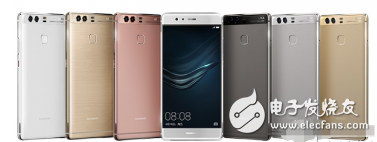As one of the biological characteristics of human body, fingerprint is not only unique, but also genetic and immutable. Therefore, this technology was first used in criminal investigation. With the passage of time, fingerprint recognition technology has entered the stage of commercialization, and gradually penetrated into the fields of access control, attendance and so on. Of course, today's mobile phone industry has also popularized this biotechnology, widely used in unlocking, encryption and other places, bringing us a fast and safe experience.
Adding fingerprint recognition to mobile phones, in my impression, Apple first proposed and applied, Apple has been installed in front of the first generation of fingerprint recognition, it seems to become a standard, as if it is not predecessor is a violation of the law, Or it seems to be low.
Here are a few of the more common fingerprint phones on the market for comparison, and for the difference between the front and back of the fingerprint identification module, there are disadvantages analysis!
Fingerprint recognition front and rear contrastApple released iphone 5s to make the push-type fingerprint recognition solution for the first time in mobile phones, but after Mate7 went on the market, it set off a wave of Android-based push-type fingerprint recognition solutions. Now more and more machines follow the post-design of Mate7. Fingerprint recognition has gradually become the standard design of Android phones.

At present, iPhone and Samsung adopt the pre-fingerprint identification scheme, but most domestic manufacturers draw on the design of Huawei Mate7, adopting the rear fingerprint identification scheme, front and rear schemes, each with advantages and disadvantages. The following general specifications of the pre-fingerprint And the general outline of the post is listed, and a comparative description is made:
Front fingerprint:iPhone 6S, front circular fingerprint recognition: module shape diameter 10.4mm, recognition area 4.8*5.9mm, pixel array 96*118pixels, 500dpi, recognition rate FRR@FAR=1%@1/50k, number of entries 15~20 Times
Samsung S7, front long strip fingerprint recognition: module dimensions 5*14mm, recognition area 4*10mm, pixel array 57*142pixels, 363dpi, recognition rate FRR@FAR<1.6%@1/50k, number of entries 15~ 20 times;
The above two front schemes all add Dome buttons;
Advantages and disadvantages of pre-fingerprint recognition
The commercialization of Samsung/Apple Pay not only allows us to see the second spring of NFC coming, but also sees the scene of large-scale popularization of front-mounted fingerprint modules in the future (NFC modules are generally located above the back of the machine head), of course, the premise is Samsung / Apple Pay can be popularized. In terms of operation, if the mobile phone is placed on the desktop, if there is news and it is not convenient to pick up, just use the recorded finger to click and view it, so the front fingerprint module is more convenient than the rear.
However, aside from the above scenario, the large screen machine with the front fingerprint module is extremely inconvenient when unlocking with one hand, and there is a risk of falling. In terms of fingerprints, because the large screen machine of the front fingerprint module generally does not consider one-handed operation, ten fingers are randomly recorded. If different fingerprint functions are combined with different fingerprints, there will be a better experience.
Advantage:
1. When fingerprinting is performed, the operation is visible, and the learning cost is lower than the post-setting;
2. When the mobile phone is placed on the table and needs to be unlocked, the front fingerprint will be more convenient, without picking up the mobile phone;
3. Fingerprint and Home key are combined into one, convenient UI operation;
Disadvantages:
1. The recognition rate is lower than the post-position, and the number of entries is more;
2. For large-screen mobile phones, one-handed support cannot afford the entire mobile phone, which is relatively weak to use;
3. The waterproof problem of the module area is difficult to solve;
4. The proportion of the mobile phone screen cannot be made larger, and the chin is longer, which affects the coordination of the positive proportion of the whole machine;
5. The front-end cost is high, and the antenna interference problem is more difficult to solve;
Small computer system interface (SCSI) is an independent processor standard for system level interfaces between computers and intelligent devices (hard disks, floppy drives, optical drives, printers, scanners, etc.). SCSI is an intelligent universal interface standard.
VHDCI-90°SCSI Section
ShenZhen Antenk Electronics Co,Ltd , https://www.antenkconn.com